In any high-performing sales team, top talent isn’t just valuable—they’re essential. They’re the ones consistently driving results, pushing boundaries, and inspiring others to elevate their game. But here’s the thing: if we’re not actively recognizing and rewarding these people in ways that resonate with them personally, we risk losing them. Recognition and tailored incentives aren’t just “nice-to-haves”—they’re critical tools for retention. So, how do we approach these in a way that’s genuine and impactful? Let’s dig in.
Understanding Why Recognition Matters
Recognition is powerful. It tells people their efforts are noticed, valued, and respected. For top performers, who often have high expectations for themselves, external acknowledgment of their work can be a key motivator. In my experience, recognition done well reinforces their commitment, loyalty, and drive. But it needs to go beyond the “employee of the month” certificate; it has to be meaningful.
The mistake I see too often is generic recognition. Leaders assume that a quick “good job” or standard incentives are enough. The truth? For your top talent, recognition that feels like an afterthought might even come off as dismissive. We need to take the time to truly understand what resonates with each individual.
Types of Recognition That Work
1. Public Acknowledgment
Some top performers love being publicly recognized. They thrive on being seen as role models and enjoy setting an example. For these individuals, acknowledging their contributions in team meetings or on company-wide communication channels can be incredibly motivating. It doesn’t have to be a grand affair, either—simply calling out their accomplishments in front of their peers can go a long way.
2. Personal Touches
For others, personal recognition holds more weight than public praise. I’ve worked with high achievers who preferred a private “thank you” note or a one-on-one conversation. It’s about understanding that each person has a unique way they want to be acknowledged. Take the time to ask, “How do you like to be recognized?” You’d be surprised how impactful this can be.
Tailoring Incentives to Fit Their Goals
When it comes to incentives, the “one-size-fits-all” approach won’t cut it. What drives one top performer may not inspire another. Tailored incentives are crucial because they show we’re not just rewarding their performance; we’re listening to their personal goals and aligning rewards to help them reach those goals.
1. Financial Incentives
Let’s face it—money talks. But it’s not just about bigger paychecks. Consider bonuses, stock options, or profit-sharing as ways to keep your top talent engaged and invested in the company’s success. If their contributions are directly affecting the company’s bottom line, they should feel it in their own bank accounts.
2. Career Development Opportunities
Many top performers are more motivated by growth than money. Offer them opportunities for skill development, leadership training, or even shadowing senior executives. Providing access to mentors, advanced training courses, or industry conferences can be highly attractive to those who are focused on climbing the career ladder.
3. Personal Goals and Experiences
Sometimes, incentives tied to personal goals are the most effective. For example, one high-performing rep I worked with loved traveling. So instead of a standard cash bonus, we arranged a travel package as a reward. Another rep was passionate about furthering her education, so the company covered tuition costs for a course she wanted to take. These tailored incentives are powerful because they align directly with the individual’s aspirations.
Building a Culture of Recognition
Recognition and incentives don’t just benefit the individual—they impact the entire team. When others see top performers being recognized, it sets a standard and inspires them to reach that level. As leaders, we should be consistent in celebrating achievements, big and small, to create an environment where excellence is acknowledged and encouraged.
One of the best things I ever implemented was a “Weekly Wins” meeting where everyone shared a recent success, and we highlighted a standout performer. It was a simple initiative, but it shifted the culture to one where recognition became the norm, and people were motivated to be part of those conversations.
Make Recognition and Incentives an Ongoing Practice
The truth is, recognition and tailored incentives aren’t a one-time deal. To be truly effective, they need to be part of an ongoing strategy. Here are some tips for keeping these practices alive and impactful:
- Schedule regular check-ins to discuss personal goals and preferences for recognition. Top performers’ motivations might change over time, and the only way to know is by asking regularly.
- Mix up your approach. Don’t let recognition become routine. Surprise them with a new incentive, a different way of showing appreciation, or a spontaneous acknowledgment.
- Encourage peer recognition. Sometimes, recognition from colleagues can be even more meaningful. Create a way for team members to nominate each other for achievements or give shout-outs.
The Bottom Line: Invest in What Keeps Your Best People Engaged
Top performers are your greatest assets, and retaining them requires more than just a competitive salary. It’s about making them feel valued in a way that’s personal and meaningful to them. Recognition and incentives tailored to their individual needs show that you see them as more than just numbers on a report—they’re valued members of the team with unique goals, dreams, and motivations.
So take the time. Learn what makes each person tick. When you tailor your approach to recognition and incentives, you’re not only building loyalty—you’re fostering an environment where your top performers can thrive, excel, and stay right where you need them.
